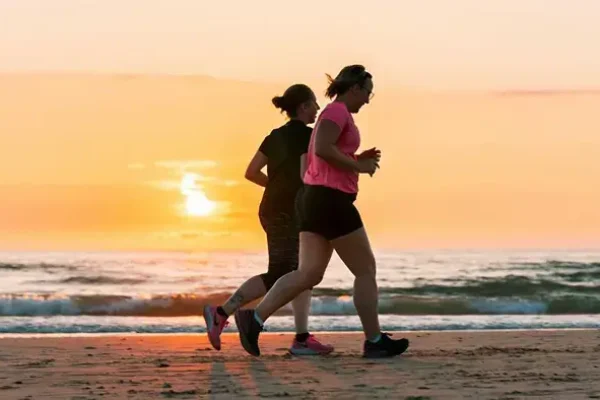Life is filled with ups and downs, and it’s natural to encounter moments that test our emotional and mental well-being. Here is a comprehensive guide on coping strategies designed to empower you in navigating life’s challenges with resilience and strength.
Whether you’re facing anxiety, hyper-arousal, hypo-arousal, or the lingering effects of trauma, this resource is here to provide you with a toolkit of effective coping strategies. Our goal is to equip you with valuable skills to foster emotional balance and enhance your overall well-being.

Explore the following sections tailored to specific mental health areas and discover practical, evidence-based coping mechanisms to help you thrive in the face of life’s challenges. Remember, you’re not alone on this journey, and by developing these skills, you’re taking a proactive step towards building a resilient and healthier future.
Anxiety is a natural and adaptive response to stress or perceived threads. Most people experience anxiety as a feeling of unease, worry, or fear, often accompanied by physical sensations such as increased heart rate, muscle tension and restlessness. It can range from mild and manageable to severe and debilitating. While experiencing anxiety is a common aspect of life, it can take over and become excessive and persistent and interfere with daily functioning. Some individuals may benefit from various therapeutic interventions like counselling, coping strategies, and, in some cases, medication. On some occasions, anxiety can also be a symptom of trauma and complex trauma.
Here are some coping strategies for anxiety:

Another way to navigate anxiety is to do a 5, 4, 3, 2, 1 grounding.
Connecting with your breath is a simple yet powerful way to ease anxiety and regulate your nervous system.
Many breathing techniques can support you—here’s one to try:
Before you begin, take a moment to settle. Breathe naturally and notice your feet on the ground or the surface supporting you.
Now, begin the rhythm:
When you’re ready, add calming phrases:
Feel free to change the words so they truly resonate with you. Continue for as long as it feels helpful and repeat regularly,

Physical movement can be a powerful way to manage anxiety—when it’s aligned with what your body needs.
For some people, vigorous exercise like running, dancing, or kickboxing helps release built-up tension and anxiety. For others, slower-paced movement such as yoga, stretching, or mindful walking offers more relief.
The key is finding what works for you. Regular physical activity—whether it’s high-energy or calming—can support your nervous system, improve mood, and promote a greater sense of well-being.
Hypoarousal is characterized by a state of low physiological and psychological arousal, signalling that we are operating outside our typical window of tolerance. Frequently linked to depression or trauma, hypoarousal can manifest diversely, with symptoms varying among individuals. Common indicators include physical lethargy, emotional numbness, depression, low energy, shutdown, or a sense of disconnection.
Coping strategies for hypoarousal aim to invigorate the nervous system and foster connection. To address hypoarousal, consider implementing the following coping strategies:

Turn on lively music and immerse yourself in its uplifting rhythm. Integrate physical activity by incorporating some dance moves, providing an enjoyable and energizing experience.
Explore the revitalizing effects of cold water by either drinking it or splashing your face. Another option is to hold an ice cube in your hand, offering a refreshing sensory experience that may help combat hypoarousal.

Engage in activities that stimulate your body, such as brisk walking or jumping jacks, to increase arousal levels. If these activities seem too energy-intensive, simply standing up and walking around your home can be a helpful alternative.
Hyperarousal is a heightened state of physiological and psychological activation, often associated with the body’s “fight or flight” response to stress or perceived threats. In this state, individuals may experience an increased heart rate, rapid breathing, heightened alertness, anxiety, and an overall sense of tension. Symptoms of hyperarousal can be associated with experiences of trauma. Hyperarousal is a sign that we are outside of our window of tolerance. However, we can learn to manage overwhelming emotions healthily over time.
Imagery can be deeply healing—especially for those recovering from relational trauma or abuse.
Visualization helps create a safe inner space, offering comfort, grounding, and a sense of control. This kind of inner refuge can be a powerful tool in your healing process.
Explore different meditations and guided imagery on platforms like YouTube or meditation apps to find what resonates with you. Making meditation a regular part of your routine can help reduce stress and support emotional regulation.
Here’s a simple guided imagery exercise to get you started:
Listening to soothing music or calming sounds can help reduce hyperarousal and support nervous system regulation. For some, singing can also be a powerful and grounding outlet—offering both emotional release and connection to the breath.
Gentle yoga or stretching can be especially helpful for those experiencing hyperarousal.
Certain poses—like Child’s Pose—can support nervous system regulation and help bring a sense of calm. Incorporating these practices into your routine may offer grounding, relaxation, and a deeper connection to your body.

Get your free Grounding Practice Worksheet + monthly insights on trauma, healing and growth. Unsubscribe anytime.
By subscribing, you agree to our Privacy Policy.
If this resonates with you, I can walk the path with you toward lasting transformation. I offer trauma-informed coaching to help you break free from old patterns, reclaim your voice, and build a life aligned with your values. I also provide trauma-informed counselling, trauma counselling, and virtual EMDR therapy for deeper transformation in a safe, supportive space. You don’t have to do it alone—support is available, and change is possible.